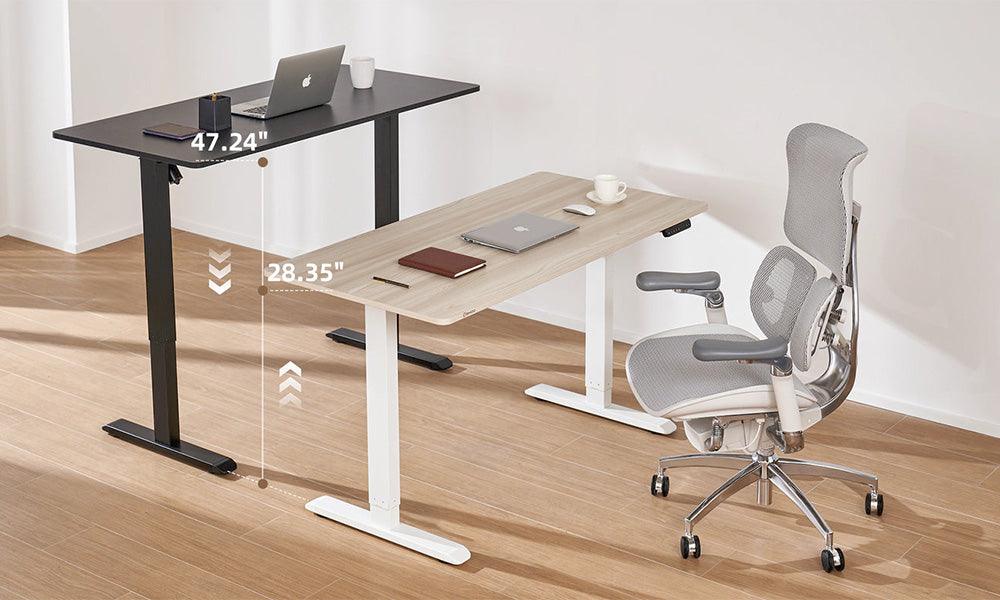In recent years, the traditional office landscape has undergone a remarkable transformation with the rise of standing desks. No longer confined to the realm of trendy offices or health-conscious individuals, standing desks have become a ubiquitous fixture in workplaces around the globe. This surge in popularity is not without merit, as mounting research suggests a myriad of benefits associated with adopting a standing desk lifestyle. From reducing back pain to enhancing cognitive function, the advantages are diverse and compelling. In this comprehensive review, we delve into the latest studies to uncover the transformative benefits of standing desks.
Understanding the Health Implications of Prolonged Sitting
To appreciate the significance of standing desks, it is essential to first examine the health implications of prolonged sitting. Sedentary behavior has been linked to a host of adverse health outcomes, including obesity, cardiovascular disease, and musculoskeletal disorders. Prolonged sitting places undue pressure on the spine, contributing to the development of chronic back pain and postural abnormalities. Furthermore, sitting for extended periods can lead to metabolic dysfunction and reduced circulation, increasing the risk of conditions such as diabetes and deep vein thrombosis.
The Rise of Standing Desks: A Response to Sedentary Lifestyles
In response to the growing concern over the health risks associated with prolonged sitting, standing desks have emerged as a viable solution to promote movement and combat sedentary behavior. Unlike traditional desks that confine individuals to a seated position, standing desks offer the flexibility to alternate between sitting and standing throughout the workday. This dynamic approach to office ergonomics has gained traction due to its potential to mitigate the adverse effects of prolonged sitting while promoting musculoskeletal health and overall well-being.
Reduced Back Pain and Improved Posture
One of the most widely cited benefits of standing desks is their ability to alleviate back pain and improve posture. Studies have consistently shown that transitioning from a seated to a standing position can reduce the incidence and severity of lower back pain. By engaging core muscles and promoting spinal alignment, standing desks help distribute weight more evenly, thereby reducing the strain on the lumbar spine. Additionally, standing encourages micro movements and postural adjustments, preventing the stiffness and discomfort often associated with prolonged sitting.
Enhanced Cognitive Function and Focus
Beyond its physical benefits, standing desks have also been shown to enhance cognitive function and promote mental acuity. Research indicates that standing promotes increased blood flow and oxygenation to the brain, which can improve concentration, memory, and overall cognitive performance. Furthermore, the act of standing fosters a sense of alertness and engagement, potentially leading to greater productivity and creativity in the workplace. By providing an alternative to sedentary behavior, standing desks empower individuals to optimize their cognitive function and sustain mental clarity throughout the day.
Promoting Metabolic Health and Weight Management
Another compelling advantage of standing desks is their potential to promote metabolic health and facilitate weight management. Prolonged sitting has been linked to metabolic disturbances, including insulin resistance and elevated blood sugar levels. By contrast, standing desks encourage increased energy expenditure and may help regulate blood glucose levels more effectively. Moreover, standing promotes greater engagement of leg muscles and core stabilizers, contributing to improved muscle tone and calorie expenditure over time. These metabolic benefits make standing desks a valuable tool in the fight against obesity and metabolic syndrome.
Practical Considerations and Implementation Strategies
While the benefits of standing desks are clear, successful integration into the workplace requires careful consideration of practical factors and implementation strategies. Employers should provide ergonomic guidance and resources to ensure proper desk setup and encourage gradual transitions to standing. Additionally, incorporating movement breaks and active sitting options can further enhance the benefits of standing desks while minimizing the risk of fatigue or discomfort. By fostering a culture of movement and flexibility, organizations can optimize employee health and performance while creating a more dynamic and inclusive work environment.
Conclusion:
In conclusion, the evidence supporting the benefits of standing desks is compelling and multifaceted. From reducing back pain and improving posture to enhancing cognitive function and metabolic health, standing desks offer a holistic approach to promoting well-being in the workplace. By challenging the sedentary norms of traditional office environments, standing desks empower individuals to take control of their health and productivity. As we continue to prioritize employee wellness and ergonomics, standing desks stand poised to revolutionize the way we work and live.



































